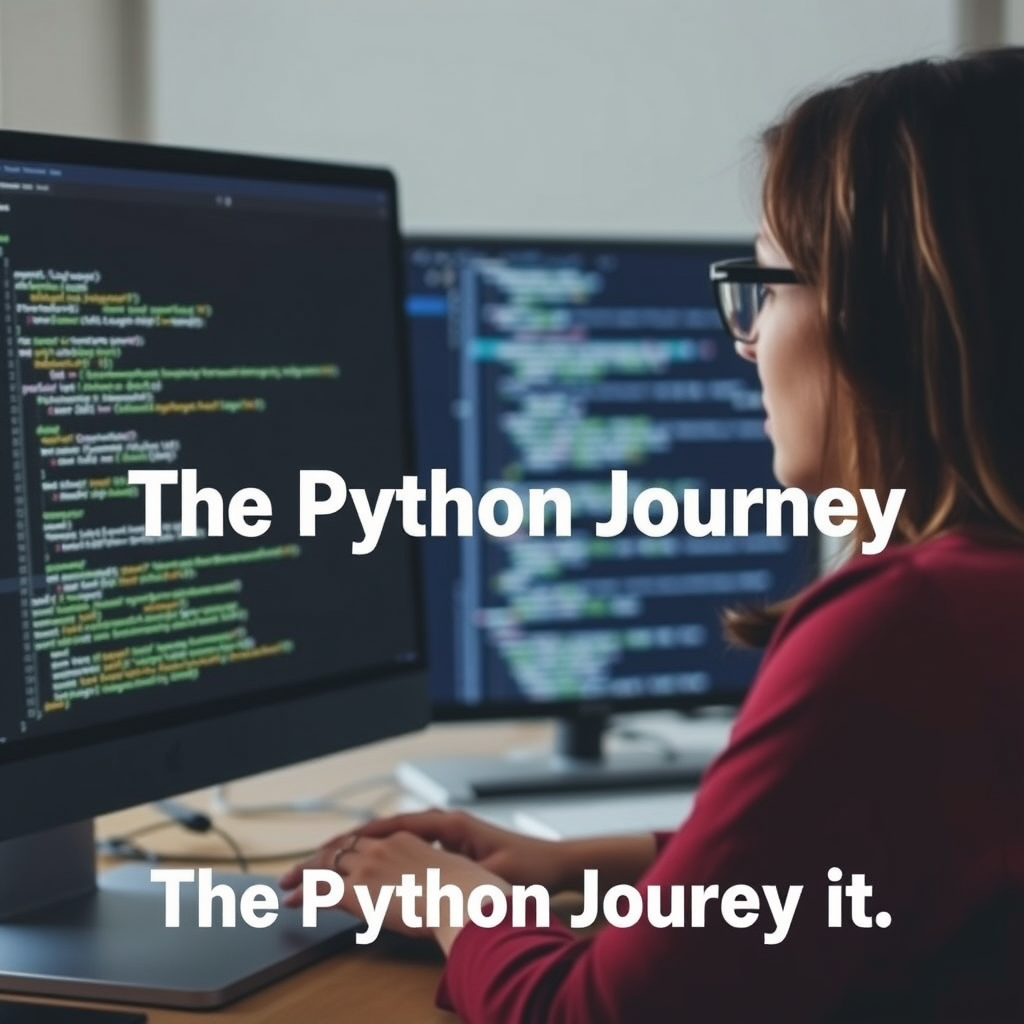Python is a programming language that has steadily grown in popularity due to its simplicity, readability, and versatility. First developed in the late 1980s by Guido van Rossum, Python was designed with a focus on code readability and developer productivity. Its straightforward syntax, which resembles plain English, allows programmers to write code that is both easy to understand and maintain. This quality makes Python an excellent choice for beginners while also being powerful enough for experienced developers working on complex applications.
Over the years, Python has established itself in various domains, including web development, data science, machine learning, automation, and artificial intelligence (AI). Its extensive libraries and frameworks, such as Django for web development, Pandas and NumPy for data analysis, and TensorFlow for AI, have made Python an indispensable tool in these fields. This versatility has been a driving force behind its wide adoption by both individuals and large organizations.
In recent versions, Python has seen significant advancements. Python 3, which was introduced in 2008, marked a major shift from Python 2, bringing improvements in language consistency, memory management, and performance. Recent releases, such as Python 3.10 and 3.11, have introduced features like structural pattern matching, which provides a more expressive way of handling complex conditions in code, and performance optimizations that make Python even faster. These updates reflect the community’s ongoing commitment to refining the language and ensuring it stays relevant in a rapidly changing technological landscape. If you are eager to download the PDF book for the topics mentioned in the Table Of Contents, head straight down to download it. Please do comment on this effort of mine so that it will encourage me to do better. Also, comment if you would like to understand a specific topic of your interest. The Python Journey will continue with advanced topics lined up in this month. Keep reading. Spread the word about learnxyz.in
Table Of Contents
- Setting Up Python
- Get the basics Right
- Python Variables and Data Types
- Conditionals in Python
- Exception handling in Python
- Type Casting in Python
- Functions in Python
- Python Lists
- Python Tuples
- Python Dictionaries
Bonus from the website
- Exploring best features of Python 3.12
- Sending messages from Slack using Python
- Python for Finance
- Python FastAPI
- Understanding Python ‘With’ Statement
- Using RabbitMQ with Python and C#
- Python compared to other languages PHP, C++, C# and Java
- Mastering Python Dictionaries
- Top 10 Python web frameworks
- Python Websockets
- Python Inheritance
- Python for complex and odd tasks
- Python for systems programming
- Python plays with React
- Python Chat GPT
- And Much Much More All on Learnxyz.in
Remarkable Starter Bundle – Remarkable 2
The Original Paper Tablet | Includes 10.3” Remarkable Tablet, Marker Plus Pen with Built-in Eraser
Less -10% ₹39,599

Python’s future prospects are bright, largely due to its strong community support and its adaptability to emerging trends. With the rise of data-centric technologies like artificial intelligence, machine learning, and big data, Python’s role is only set to grow. Its ease of use, combined with powerful libraries for data manipulation and model training, makes it the go-to language for professionals in these fields. Furthermore, Python’s involvement in cutting-edge areas like quantum computing and robotics suggests that it will continue to be a key player in shaping the future of technology.

As we look ahead, Python’s roadmap includes ongoing enhancements to performance, compatibility, and developer experience. With more tools emerging for concurrency and parallelism, Python aims to address some of its traditional limitations in handling highly parallel workloads. This focus, along with the continuous evolution of libraries and frameworks, ensures that Python will remain a critical programming language for both current and future technological innovations.
Download the PDF Book here

All-new Kindle Paperwhite (16 GB)
Now with a 6.8″ display and adjustable warm light
Only at ₹14,999/-
The field of programming is constantly evolving, and Python, in particular, has emerged as a language that is both powerful and accessible. When I first began my own journey with Python, I was drawn to its simplicity and versatility. As a programmer, I quickly realized that Python wasn’t just a language; it was a gateway to endless possibilities. From web development to data science, automation to artificial intelligence, Python could be applied to an incredible range of domains. That realization was the spark behind this book. Although, this books gives a quick introduction to the Python language, I am considering Python 3.12.x in this book.
Grab the best resources on Python






Hey, I check out your blog occasionally and I really like the information you share.Stick with it!
Including Sugar Defender right into my day-to-day regimen has actually been a game-changer for my generalhealth. As somebody who currently prioritizes healthy and balanced eating, this supplement has offered an included increase of defense.in my power degrees, and my desire for harmful treats so uncomplicatedcan have such a profound influence on my life.
You made some good points there. I looked on the internet for the topic and found most individuals will agree with your website.
pokračujte v pěkné práci, kolegové.|Když máte tolik obsahu a článků, děláte to?